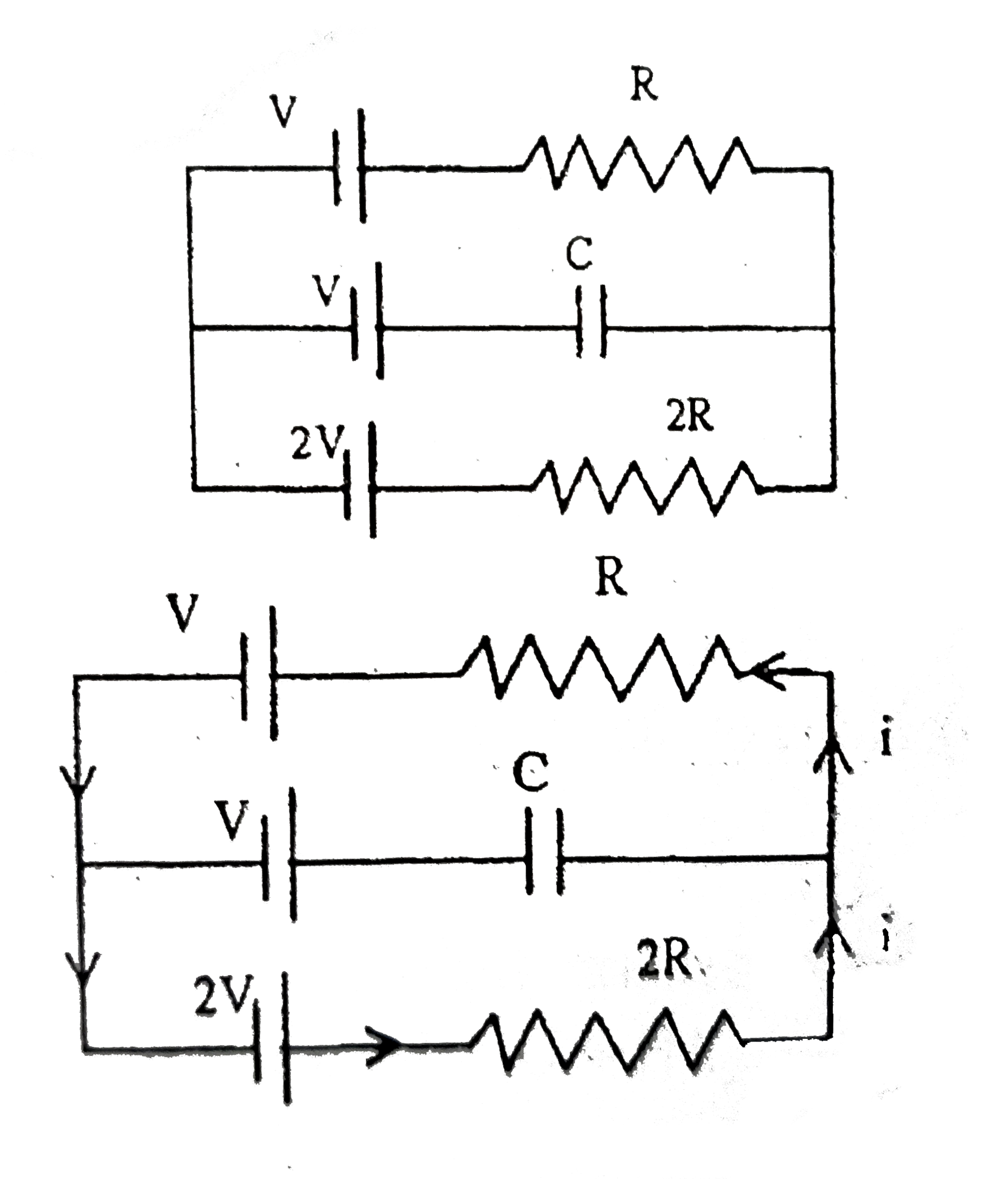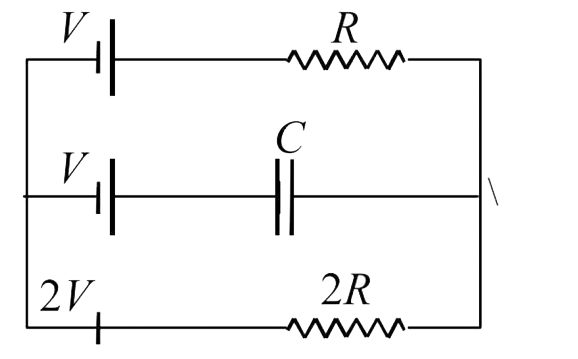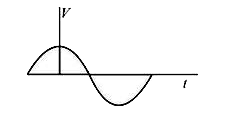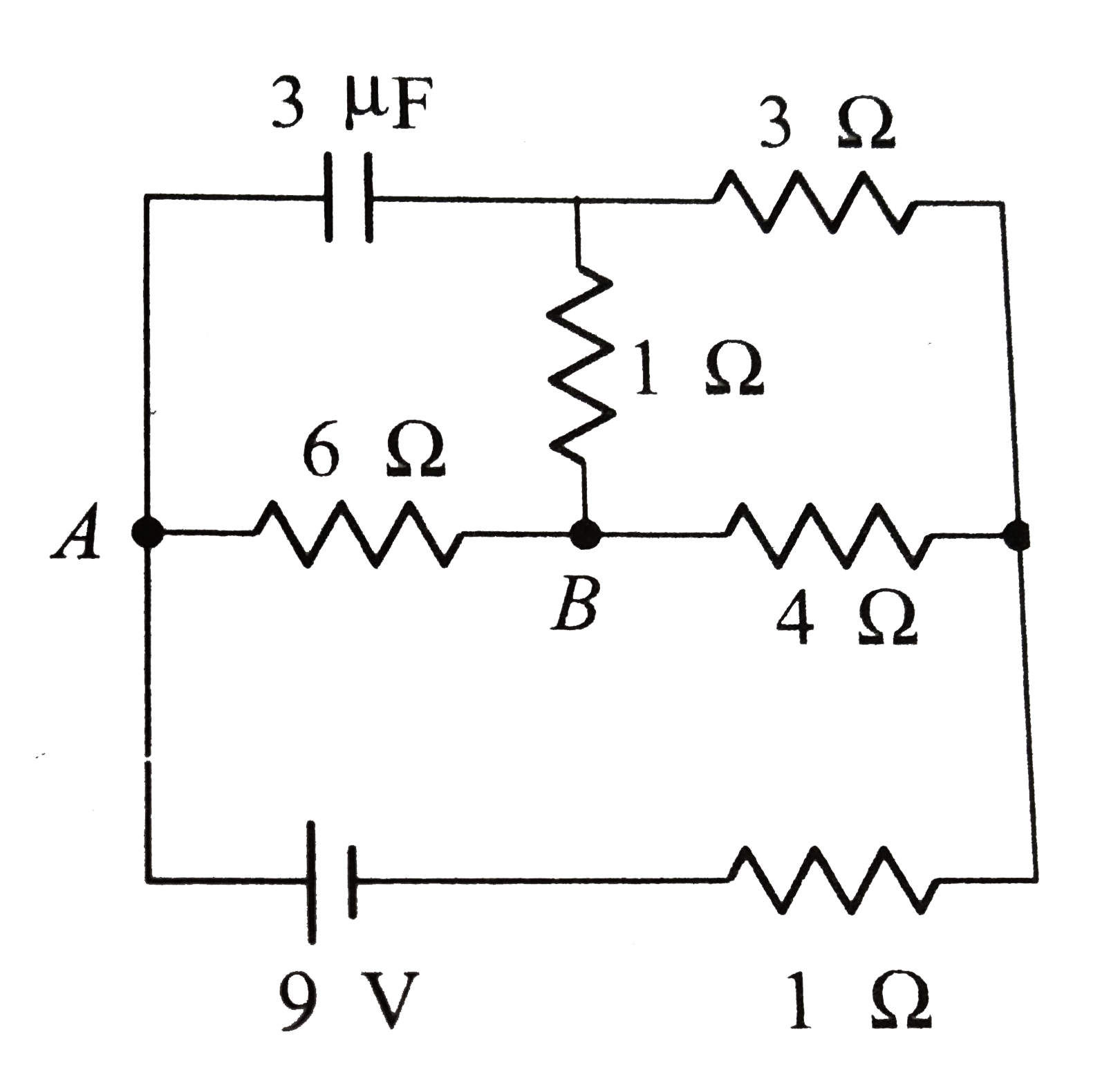A : Voltage drop or gain across a capacitor depends on the direction of current and increase opposite to the direction of current .
R : Voltage drop or gain across a capacitor depends on the direction of current .
If both Assertion & Reason are true and the reason is the correct explanation of the assertion , then mark
If both Assertion & Reason are true but the reason is not the correct explanation of the assertion then mark.
If Assertion is ture statement but Reason is false , then mark
If both Assertion and Reason are false statements then mark.
The correct Answer is:C
To solve the problem, we need to analyze the two statements provided:
Assertion (A): Voltage drop or gain across a capacitor depends on the direction of current and increases opposite to the direction of current.
Reason (R): Voltage drop or gain across a capacitor depends on the direction of current.
1. Understanding the Assertion (A):
- The assertion states that the voltage across a capacitor is influenced by the direction of current.
- When current flows in a certain direction, it affects how the capacitor charges and discharges, which in turn affects the voltage across it.
2. Understanding the Reason (R):
- The reason also claims that the voltage across a capacitor depends on the direction of the current.
- This is a true statement as the behavior of the capacitor is indeed dependent on the current direction.
3. Analyzing the Voltage Drop Across the Capacitor:
- When current flows into the capacitor in the direction of charging, the voltage drop can be expressed as V=−QC, where Q is the charge on the capacitor.
- Conversely, if the current flows in the opposite direction (discharging), the voltage drop can be expressed as V=QC.
- This indicates that the voltage drop across the capacitor is indeed dependent on the direction of the current.
4. Conclusion on the Assertion and Reason:
- Both the assertion and the reason are true.
- However, the reason does not fully explain the assertion because it does not address the aspect of the voltage increasing or decreasing based on the current direction.
5. Final Answer:
- Therefore, the correct option is that both the assertion and reason are true, but the reason is not the correct explanation for the assertion. This corresponds to option B.
Reason (R): Voltage drop or gain across a capacitor depends on the direction of current.
- The assertion states that the voltage across a capacitor is influenced by the direction of current.
- When current flows in a certain direction, it affects how the capacitor charges and discharges, which in turn affects the voltage across it.
- The reason also claims that the voltage across a capacitor depends on the direction of the current.
- This is a true statement as the behavior of the capacitor is indeed dependent on the current direction.
- When current flows into the capacitor in the direction of charging, the voltage drop can be expressed as V=−QC, where Q is the charge on the capacitor.
- Conversely, if the current flows in the opposite direction (discharging), the voltage drop can be expressed as V=QC.
- This indicates that the voltage drop across the capacitor is indeed dependent on the direction of the current.
- Both the assertion and the reason are true.
- However, the reason does not fully explain the assertion because it does not address the aspect of the voltage increasing or decreasing based on the current direction.
- Therefore, the correct option is that both the assertion and reason are true, but the reason is not the correct explanation for the assertion. This corresponds to option B.
Similar Questions
The potential drop across 7μF capacitor is 6V. Then

View SolutionThe direction of conventional current is in the opposite direction as that of electrical charge.
View SolutionA : The voltage across a battery may be less, equal or more than the emf of the battery.
R : Voltage across a battery also depends on the magnitude and direction of current .
View SolutionIn the given circuit, with steady current, the potential drop across the capacitor must be

View SolutionIn the given circuit, with steady current, the potential drop across the capacitor must be

View SolutionVoltage across a capacitor varies as shown in the diagram. Which diagram correctly represents the current time curve?

View SolutionFind the voltage drop across a capacitor connected with a resistance and a battery of 60 V in series after a long time.
View SolutionFind the potential drop across the capacitor in the given circuit.

View SolutionAsseration: Induced potential across a coil and therefore induced current is always opposite to the direction of current due to external source.
Reason: Lenz's law states that it always opposes the cause due to which it is being produced.
View SolutionSTATEMENT-1: As we move across a resistor in the direction of current, current decreases,
and
STATEMENT-2 : As we move across a resistor in the direction of current , potential decreases.
View Solution
